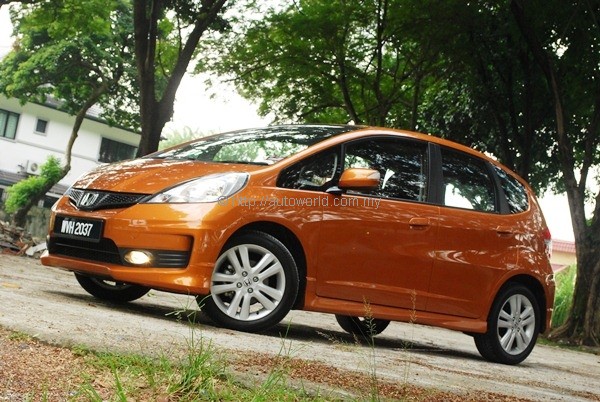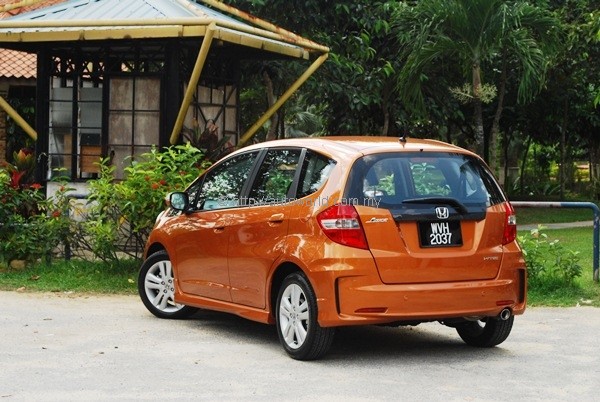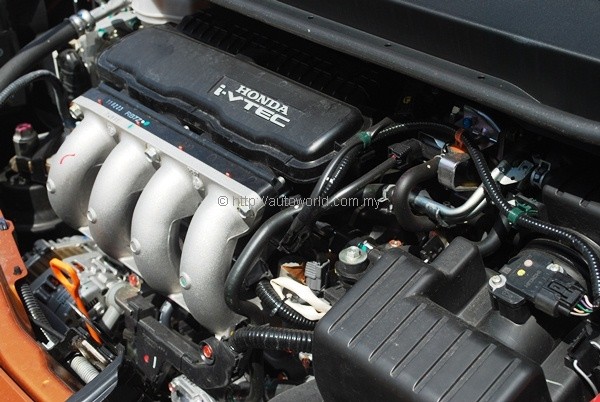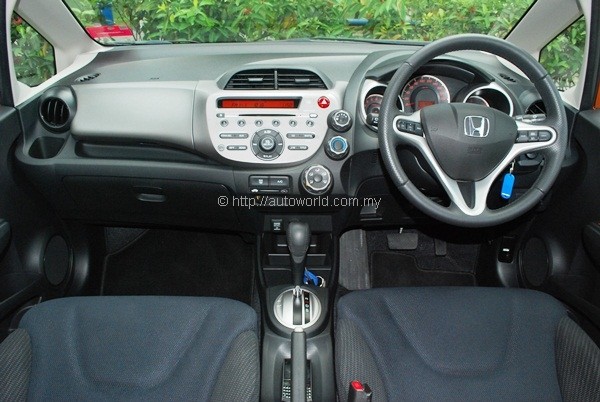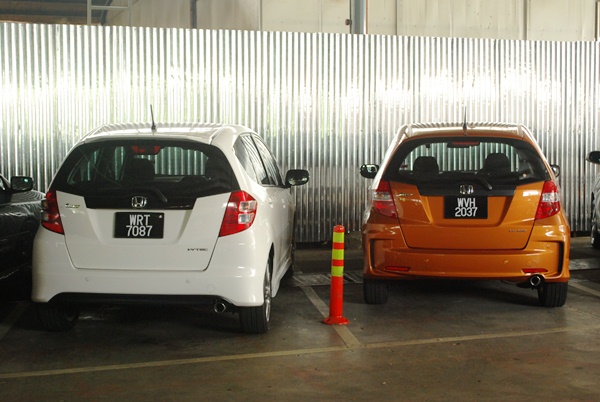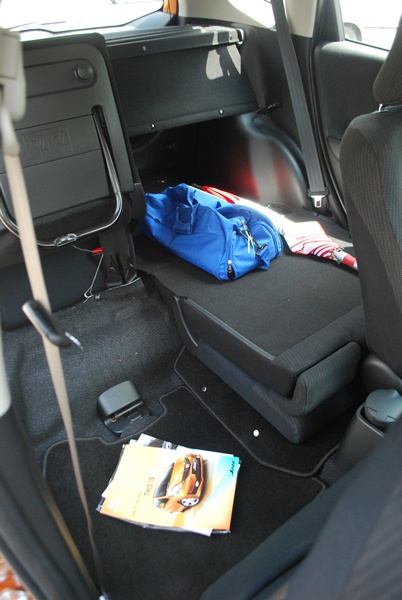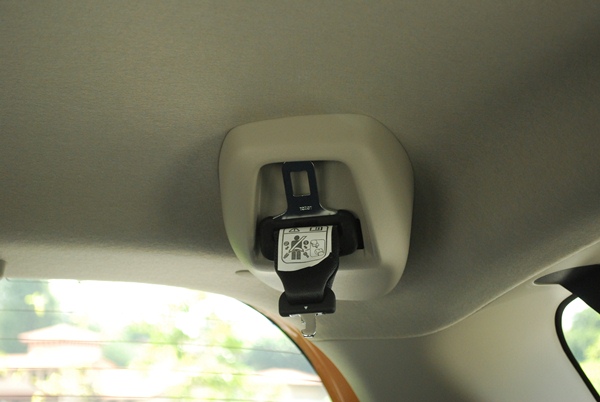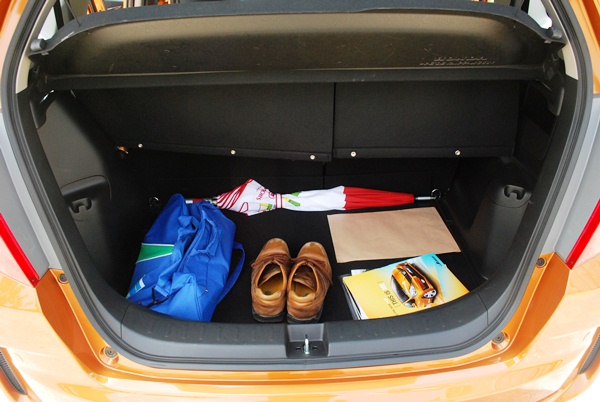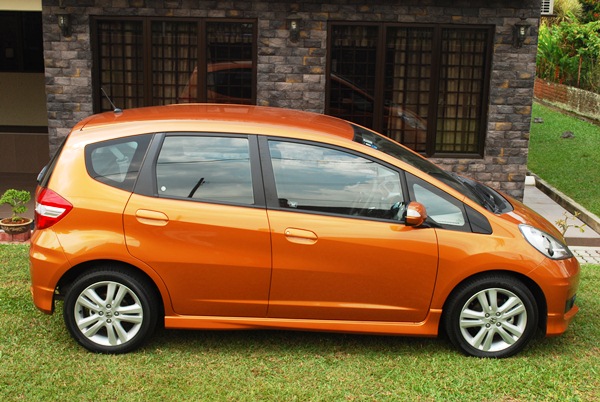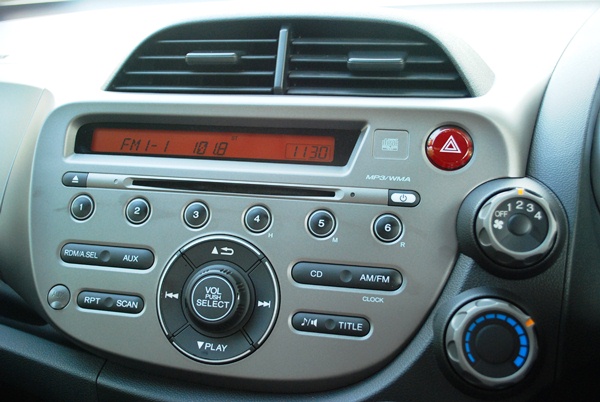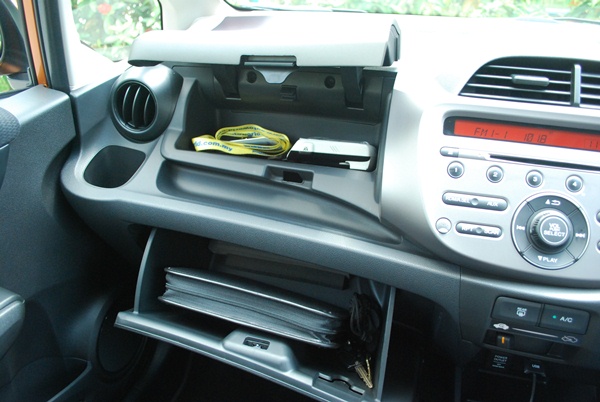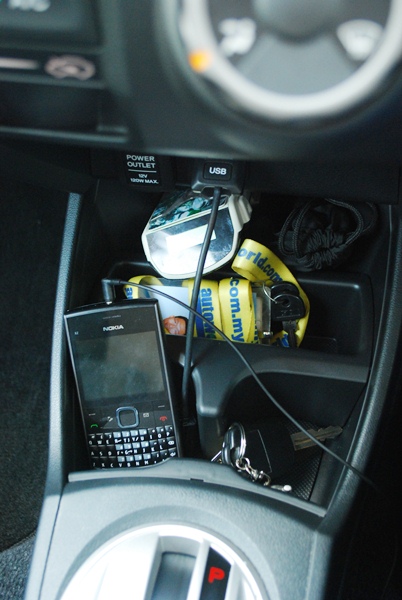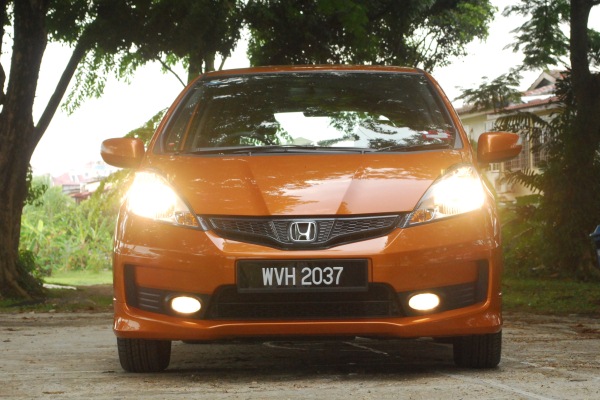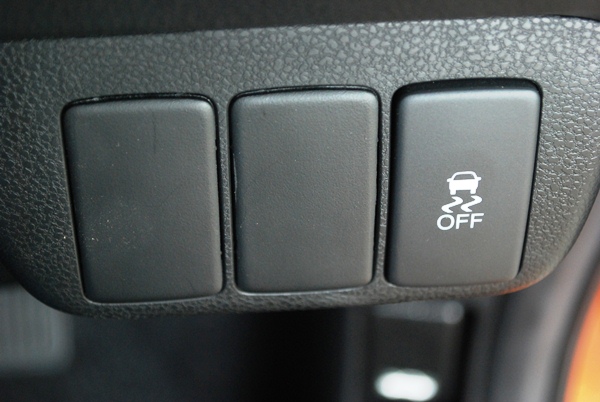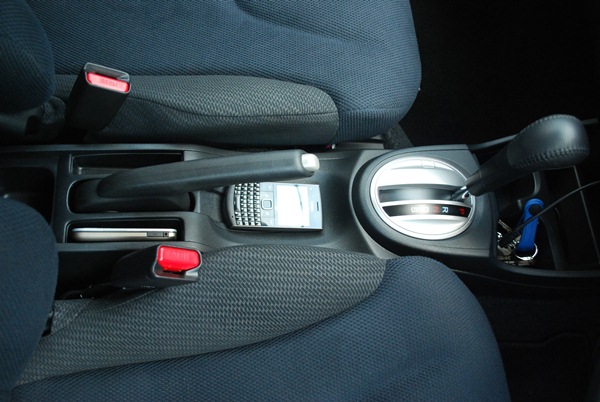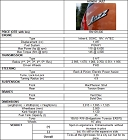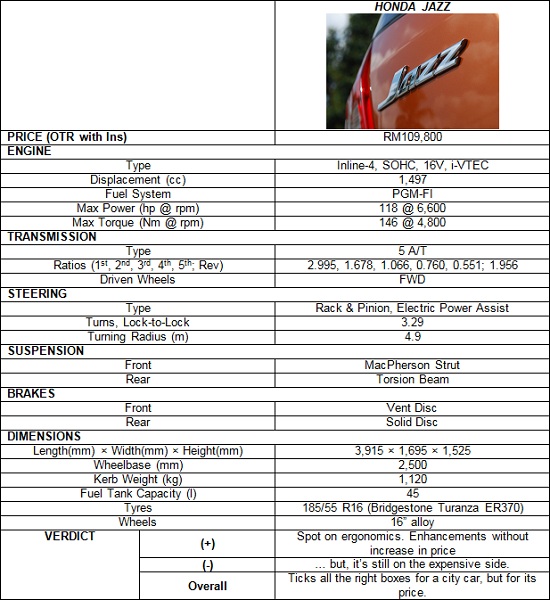Honda Jazz – Fitting Facelift
Before getting on with this test drive report, I must confess that I have something of a love-hate relationship with the Honda Jazz. In many ways, I consider the Jazz as the perfect city car – compact on the outside, spacious in the inside, pleasant to drive, and easy to live with. This is the very same formula that sees the Perodua Myvi topping our country’s sales charts at the moment.
What I have never been quite able to agree with the Jazz is its price tag. At RM109,800 with insurance, it is not cheap for a car of its size. For similar money, cars such as the Volkswagen Polo, Nissan Sylphy and Toyota Corolla 1.6 are available for your consideration. The Jazz is good, make no mistake about it, but it is simply not an easy purchase to justify.
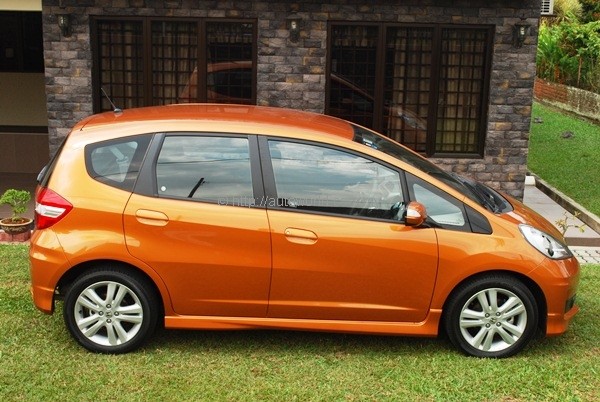 |
| Brilliant Orange Metallic is a new paint option. |
When it was launched, Honda Malaysia offered the second-generation Jazz with two trim levels, Grade S and Grade V, priced at RM104,800 and RM109,800 respectively. The Grade S variant was discontinued some point along the way. In April, a facelift was launched for the Malaysian market with the sole Grade V variant available at an unchanged price.
Compared to the pre-facelift model, the new Jazz features edgier styling touches with more aggressive details on both its front and rear bumpers. I particularly like the revised tail lights, which look a tad more elegant than before. A roof-mounted spoiler would have better complimented the sportier demeanour but that might be a bad idea as it may result in the bee-sting antenna inadvertently interfering with opening of the tailgate.
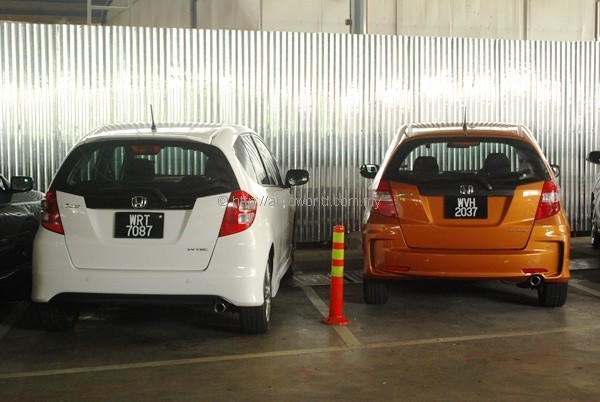 |
| Lined up side-by-side with the pre-facelift model in Honda Malaysia’s garage. |
Our test car’s Brilliant Orange Metallic paint job, new to the Jazz, further highlights the sportier styling, but whether such a bold colour is to everyone’s taste is another question altogether. For the more conservative lot, there is Polished Metal Metallic, Crystal Black Pearl, and Brilliant White Pearl in the colour palette. One major update put in by Honda is the addition of VSA in the Jazz’s safety armoury, which also includes three-point seatbelts for all passengers (front pre-tensioned), dual airbags, ABS, EBD, and Brake Assist.
Step inside the Jazz, and you will be welcomed by one of the best sorted out cabins in the business. It is neither as funky as the Ford Fiesta’s handphone-inspired stack nor as rock solid as the Volkswagen Polo’s bare but bulletproof dash, but there are good reasons to rank the Jazz’s cabin ahead of those two. Although Honda’s choice of materials lack a little polish compared to the European makes, the way that controls are laid out on the dashboard makes the Jazz’s cabin easily among the most user-friendly in the market.
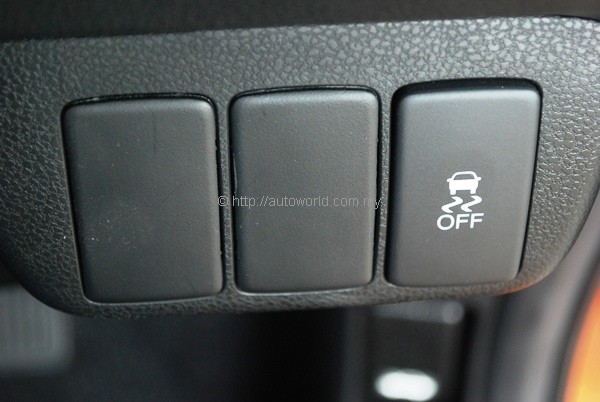 |
| VSA added at no extra cost. |
Although it is a professional requirement as a motoring journalist to be able to quickly acclimatize oneself with unfamiliar cabins and their controls, I personally find the Jazz’s cabin to be the one that is the quickest and most painless to familiarize myself with. Within five minutes of getting into the test car for the first time, I was able to find my perfect sitting position, programme my favourite radio stations in my preferred order and reset the trip meters. Quite a few test cars had me fumbling in the parking lots for 15 minutes before I even figure out the tip of their control icebergs.
It is also very practical. Whichever direction you look, there is a cubby hole within an arm’s length to deposit your phones, coins, keys and other little trinkets. I have always spoken highly of Honda’s knack of getting interiors right, and if anything, the Jazz’s cabin proves my point, and that’s before we get to its infinitely flexible Ultra Seats. Quite why Honda ditched this feature for the current generation City is beyond me. The Ultra Seats not only gives added degrees of flexibility to the Jazz, they are also remarkably easy to operate. Switching between the various possible configurations is quick, painless, and almost intuitive.
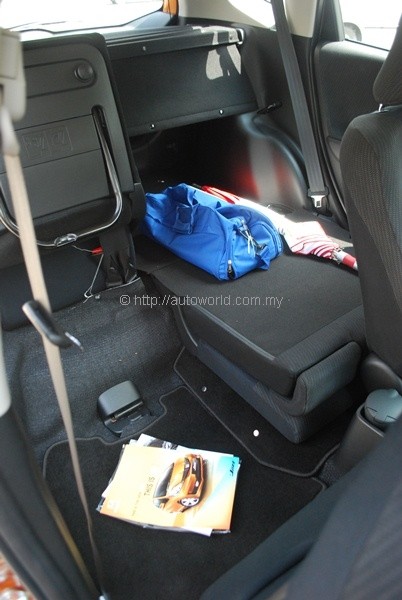 |
| Ultra Seats – every car should have them. |
On the move, I would say the Jazz is pleasant to drive. Once again, taking the Fiesta and Polo as a comparison, the Jazz lacks the Fiesta’s fun factor and the Polo’s turbocharged kick, so the enthusiast’s vote will place the Honda a distant third in such a comparison. However, the type who prefers an effortless drive will quickly warm to the Jazz’s light and easy to use controls. Don’t confuse that as saying it’s boring though. That’s too harsh a word. Having some fun at the corners is not beyond the Jazz, remember that Honda is pretty good in the handling game too.
The 118hp and 146Nm made by the Jazz’s 1.5-litre SOHC i-VTEC motor is nothing to shout about these days, but allied with Honda’s capable 5-speed automatic transmission, the Jazz is not exactly short of punch. Given a long enough stretch, the Jazz will comfortably maintain a rate of progress between 150 and 160kph, and at those speeds, we realized that Honda is increasingly serious in addressing a range-wide criticism that it has gone sloppy with its sound deadening. Both the facelifted Jazz and Accord, which we tested a couple of months back, show marked improvement of NVH isolation compared to their previous models.
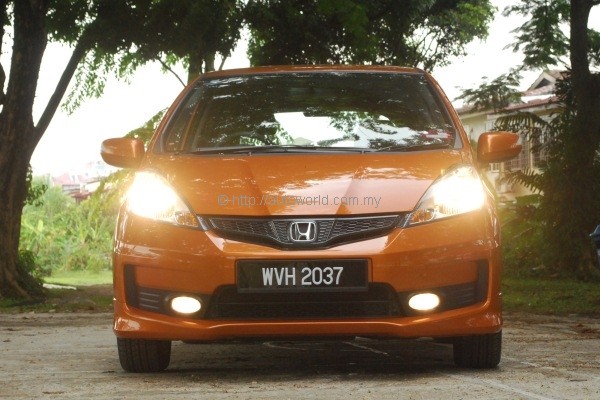 |
| Bumpers now spot bolder designs. |
So, what’s the final say on the newly facelifted Jazz? To start with, Honda’s initiative in throwing in VSA and improving the Jazz’s sound insulation with no increase in price is rightly deserving of praise. The core strengths of the Jazz which we mentioned in the opening of this review remain intact, and even if we feel Honda has priced it a little on the high side, the forces of our second hand market will probably ensure that you will recoup a huge part of your money when the time comes for you to part ways with the car.
At this moment, it would seem like we have built quite a solid case for the Jazz. Then, I remembered that there’s another car that possesses almost all of the Jazz’s core virtues, is slightly cheaper and fully imported from Japan – the Honda Insight.
 |




